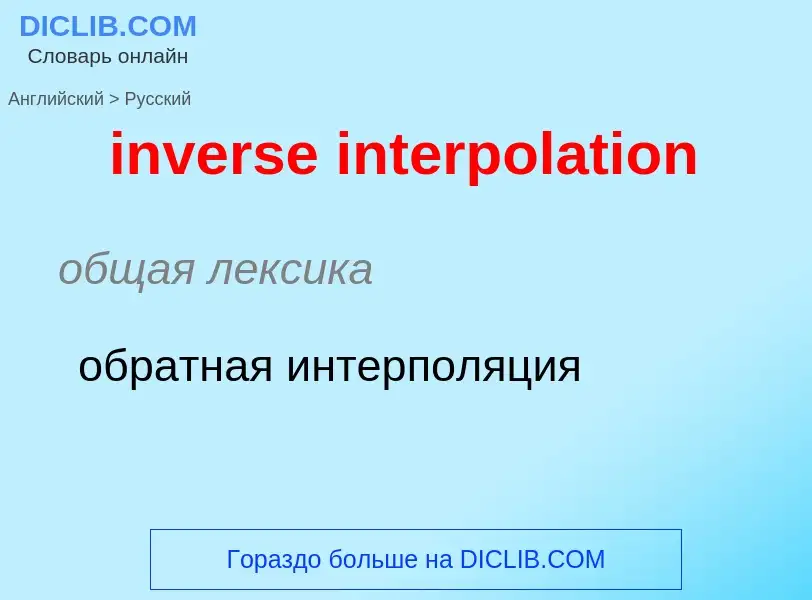Перевод и анализ слов искусственным интеллектом ChatGPT
На этой странице Вы можете получить подробный анализ слова или словосочетания, произведенный с помощью лучшей на сегодняшний день технологии искусственного интеллекта:
- как употребляется слово
- частота употребления
- используется оно чаще в устной или письменной речи
- варианты перевода слова
- примеры употребления (несколько фраз с переводом)
- этимология
inverse interpolation - перевод на русский
общая лексика
обратная интерполяция
Википедия
In mathematical logic, Craig's interpolation theorem is a result about the relationship between different logical theories. Roughly stated, the theorem says that if a formula φ implies a formula ψ, and the two have at least one atomic variable symbol in common, then there is a formula ρ, called an interpolant, such that every non-logical symbol in ρ occurs both in φ and ψ, φ implies ρ, and ρ implies ψ. The theorem was first proved for first-order logic by William Craig in 1957. Variants of the theorem hold for other logics, such as propositional logic. A stronger form of Craig's interpolation theorem for first-order logic was proved by Roger Lyndon in 1959; the overall result is sometimes called the Craig–Lyndon theorem.




